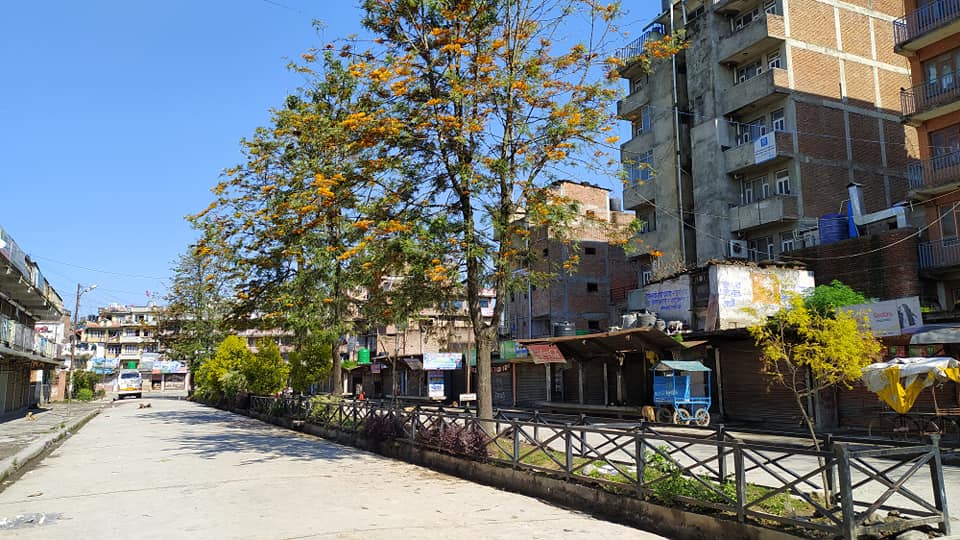
As Kathmandu evolves into a hectic capital. A vital question comes to light — can trees guard our city from escalating heat? A hidden catastrophe cast a shadow over the valley; the urban heat island effect (UHI).
This condition where the urban centre suffers markedly elevated heat in comparison to the rural areas, which brings out the severe medical threat with the shocking findings suggest that Kathmandu can be up to 10°F (5.5°C) warmer than the surrounding environment and intensifies the impact of climate change. What if the solution to this urgency lies in as straightforward as planting trees?
Urban heat effect: A looming crisis
Kathmandu Valley is experiencing unparalleled population growth with a yearly rise of about 7 per cent of rapid urbanisation and significant loss of green spaces. The hasty advancement has changed the green valley into concrete jungles causing temperature to surge and the quality of air to descend.
The UHI effect not only elevates energy consumption. In recent studies, it has been shown that urban areas consume about 30 per cent more energy due to this phenomenon. Additionally, UHI effect aids air pollution by raising the growing level of ozone formation, which can cause serious problems related to respiration making it a mandatory issue for the valley to seek a resolution.
Wellness threats linked with rising temperatures are especially concerning. Marginalised groups such as senior citizens and children and those who are with chronic health conditions are more prone to heat-related concerns. A study from the Human Health Research Council found that intense heat events in urban areas have led to a 20 per cent increase in patient intake personnel.
Trees: Nature’s cool companions

Could the answer be as simple as planting trees? The natural way to present urban forestry is to address the urban heat effect through multiple frameworks.
- Shade: Generation trees’ canopy acts as a barrier for restricting the sunlight from striking hard to the surface. Research indicates that favourably located trees can reduce the temperature up to 10°F (5.5°C).
- Evaporation: The moisture is released into the air by the trees. Reducing heat of the environment by evaporation. This process is significantly effective amid summer months when temperatures soar.
- Energy saving: Tactically planted trees can help decrease cooling costs for buildings by providing shade to air conditioning units and windows. Every penny spent on trees is beneficial in energy saving.
- Improved air quality: Urban forest plays an important role in filtering the pollutants from the air. Facilitating better conditions for public health. Fully grown trees can soak up to 150 kg of carbon dioxide per year making them an important element in combating climate change.
Current projects in Kathmandu
Recent initiatives feature the cruciality of urban forestry in Kathmandu’s battle against increasing temperatures. Recently Mayor Balen Shah has officially highlighted the important role trees and green spaces play in boosting the urban life quality. The Kathmandu metropolitan city has proactively conducted roadside plantation initiatives aiming to amplify urban greenery throughout the valley.
In addition, the Kathmandu Ecological Urban Renewal Project Inaugurated in March 2024 focuses on reviving the green spaces that are linked with active water bodies and parks while elevating the infrastructure in underserved urban areas. This project aims to unite communities with the natural environment, making them more adaptable to the impact of climate.
Emerging challenges ahead
Regardless of the transparent benefits of urban forestry. Major challenges are faced by the Kathmandu Valley in addressing effective programmes. Green spaces are being forfeited which is due to unmanaged urbanization and infrastructures. Along with limited public engagement concluded that many residents felt excluded from the policy formulation process related to green initiatives. A recent survey demonstrated that 78 per cent of people are displeased with the current quality of tees.
Budget limitations and lack of awareness related to the benefits of urban forestry hinder the process. Improper management protocols can lead to tree demise interfering with attempts to increase the green spaces. One of the key challenges is that green spaces are often being disrupted by new infrastructures.
Kathmandu Ring Road Improvement Project announced a plan to cut down over 2000 trees along the roadways to expand the road lane from three to eight lanes. This initiative has triggered public rage and protests against the community’s growing concerns over the loss of green spaces and trees.
A call to action
As we deal with the challenges of climate change and gradual urbanization in Kathmandu. It’s time to identify the revolutionary power of trees in our valley. By capitalising on the urban forestry process. We can confront the UHI effect while enriching the well-being of the community and upgrading the air quality.
So the next time you notice a tree on the street or hear about the new planting initiatives, remember; that it’s not just a plant, it’s an essential part of the city’s infrastructure. One that can save lives and help cool progressively sweltering cityscapes. Let’s advocate and emphasize the importance of green spaces and affirm that every community has access to the cooling shade of trees.
In summary, trees may offer the alternative for forming a greener future for Kathmandu in light of temperature and environmental challenges. Will we act before it’s too late? This decision is in our hands. Let’s choose wisely!

